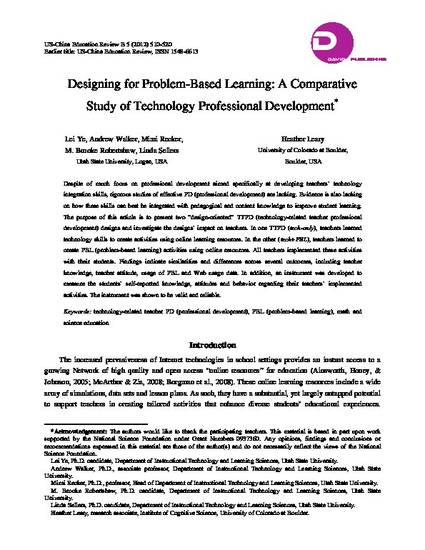
Despite of much focus on professional development aimed specifically at developing teachers' technology integration skills, rigorous studies of effective PD (professional development) are lacking. Evidence is also lacking on how these skills can best be integrated with pedagogical and content knowledge to improve student learning. The purpose of this article is to present two "design-oriented" TTPD (technology-related teacher professional development) designs and investigate the designs' impact on teachers. In one TTPD (tech-only), teachers learned technology skills to create activities using online learning resources. In the other (tech+PBL), teachers learned to create PBL (problem-based learning) activities using online resources. All teachers implemented these activities with their students. Findings indicate similarities and differences across several outcomes, including teacher knowledge, teacher attitude, usage of PBL and Web usage data. In addition, an instrument was developed to measure the students' self-reported knowledge, attitudes and behavior regarding their teachers' implemented activities. The instrument was shown to be valid and reliable. Problem-Based Learning Alignment Rating Scale is appended. (Contains 10 tables and 2 figures.)
